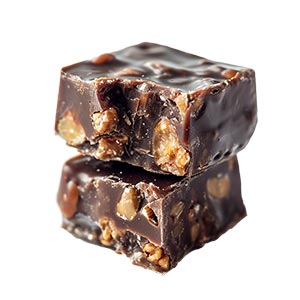Praline in fragrances is synonymous with indulgence, adding a rich, sweet, and nutty dimension. This ingredient is often associated with gourmand fragrances, where it contributes to the creation of a delectable and inviting scent. The use of Praline in perfumery is a relatively modern development, aligning with the rise of gourmand scents that mimic the aromas of sweet and savory dishes. Its sweet, almost caramel-like scent, combined with a nutty undertone, makes it a popular choice for adding depth and a luxurious feel to fragrances. Praline's rich profile complements warm, spicy, and vanilla notes exceptionally well. It is commonly used in the heart and base notes of a fragrance, where it helps to build a long-lasting, sweet, and comforting aroma.
Natural or Synthetic?
Praline is a composite note in perfumery that is created synthetically to evoke the scent of the confection. It is typically formulated using a combination of synthetic molecules that mimic the sweet, nutty, and creamy characteristics of praline confectionery. This includes aromachemicals that replicate the scents of caramelized sugar, nuts, vanilla, and sometimes creamy elements. The exact composition can vary depending on the desired scent profile, but it often involves a blend of synthetic molecules such as ethyl maltol for sweetness, vanillin for a vanilla aspect, and other synthetic compounds to add depth and richness. Natural extraction is not applicable for Praline as it is not a single botanical ingredient but a culinary creation.
Fragrance Families Praline Most Commonly Found In
Show fragrances that contain Praline as a note


